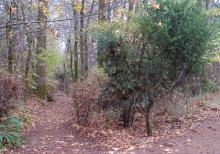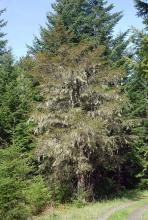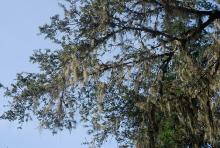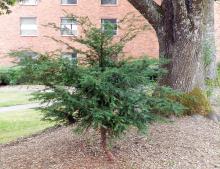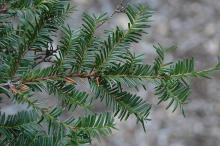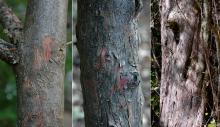Taxus brevifolia
Common name:
Pacific Yew
Western Yew
Pronunciation:
TAKS-us brev-i-FO-lee-a
Family:
Taxaceae
Genus:
Type:
Conifer
Native to (or naturalized in) Oregon:
Yes
- Conifer, evergreen tree/shrub, spreading, 40-50(80) ft [12-15(24) m] high. Bark about 5 mm thick, with thin, dark red-purple scales. Needles radially arranged around the stem but appearing more or less 2 ranked, 1-2.5 cm long, linear, tapering to a horny point, yellow-green above, paler below, short yellow petiole. Dioecious - male and female plants. Cone (aril) is fleshy, scarlet, oblong-oval, 4-7 mm long, enclosing a single-seed. Seeds are poisonous.
- Sun or shade. An understory tree found in moist, well-drained soil. Very slow growing. In western Oregon forests it is often covered with lichens and mosses.
- Hardy to USDA Zone 4 Native range from extreme southeastern Alaska to northern California, and east to northeastern Oregon, northern Idaho, and western Montana.
- Seeds are poisonous to humans, but birds consume them. The foliage is poisonous to horses and cattle, especially if left to rot (Pojar and MacKinnon, 1994).
- The bark and other parts of the tree contain an anti-cancer drug, taxol, which is also found in related yew species.
- Oregon State Univ. campus: east side of "arboretum" south of Moreland Hall (2013) and in the court yard of the Dorm Quad (Buxton, etc.) on Jefferson Ave. west of 26th St. (2013).

